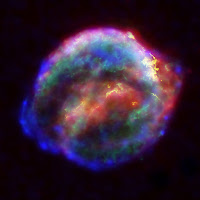 |
| Light microscope images of euglenoid cysts from ~200 million years ago in Germany (left) and the Netherlands (right) (Bas van de Schootbrugge/Utrecht University). |
.
 |
| Macroscopic life forms in space light years wide |
If ever playing Twenty Questions, there's a little-known form of life to pick that is sure to leave all opponents stumped.
It is neither animal, nor vegetable, nor mineral. It's not even bacterial nor fungal. What the hockey puck?
Euglenids are a group of unicellular eukaryotes that gain energy through both photosynthesis (making energy from light), like a plant, and through consuming other living beings, like a carnivorous animal (stealing the bodies of fellow beings).
 |
| Examples of fossilized Pseudoschizaea shells, also recorded as Chomotriletes, Circulisporites, and Concentricystes (Schootbrugge et al., Review of Palaeobotany and Palynology, 2024). |
.
 |
| I'm more human than you, SOB! - No you're not! |
Now, an international team of scientists argues that they have found ancient Euglenid fossils hiding in "an extensive paper trail" of already published scientific research.
For years, the shell-like fossils were misidentified as possible worm eggs, algal cysts, or fern spores, partly because of their tiny circular "ribs" on the inside.
The fossils didn't really fit into any taxonomical box. So in 1962, scientists called them Pseudoschizaea shells.
Their similarities over the years have stumped experts, as these fossils span immense timelines, from almost half a billion years ago to the present. More










































































































































































































































No comments:
Post a Comment